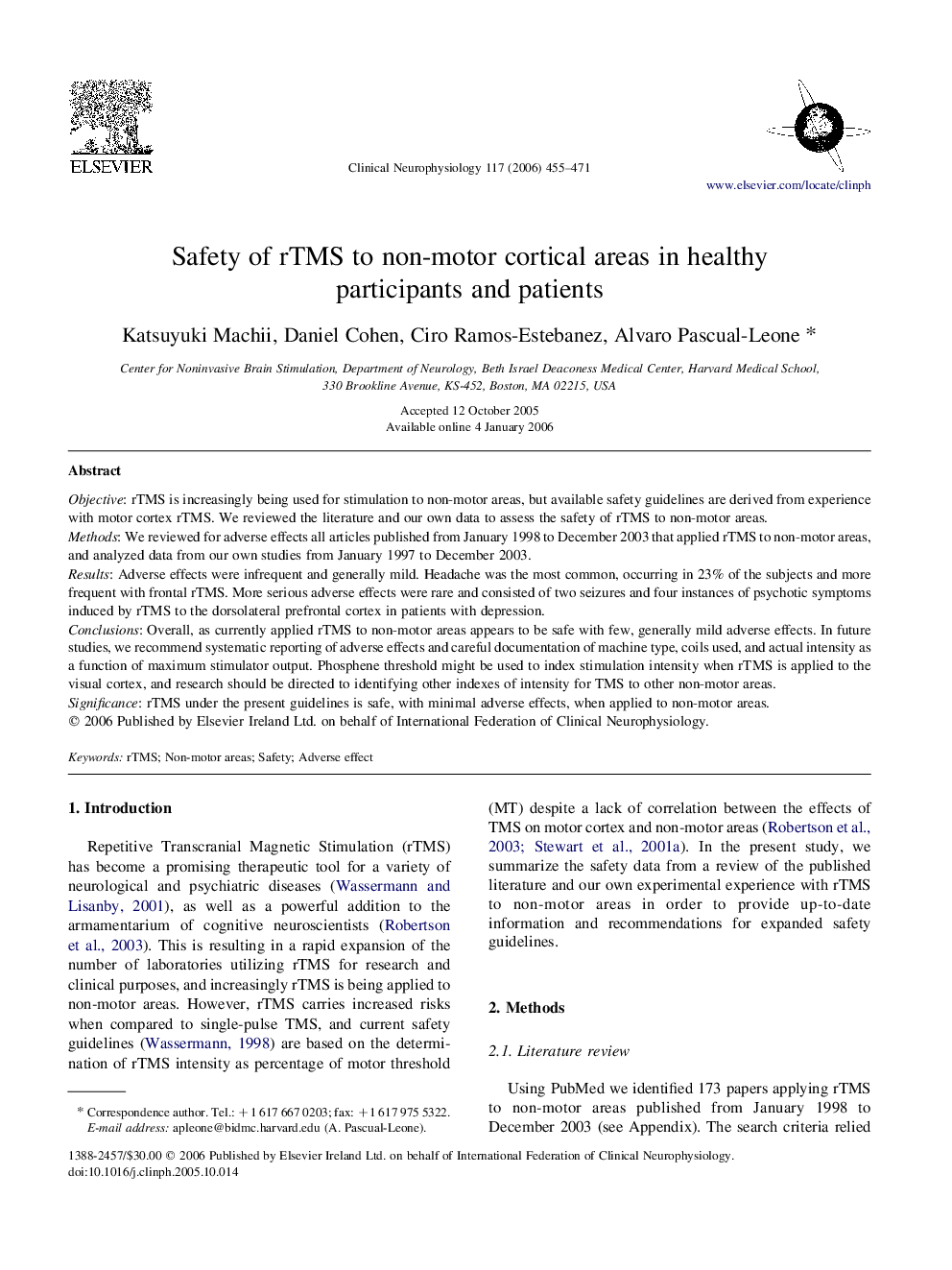| Article ID | Journal | Published Year | Pages | File Type |
|---|---|---|---|---|
| 3048153 | Clinical Neurophysiology | 2006 | 17 Pages |
ObjectiverTMS is increasingly being used for stimulation to non-motor areas, but available safety guidelines are derived from experience with motor cortex rTMS. We reviewed the literature and our own data to assess the safety of rTMS to non-motor areas.MethodsWe reviewed for adverse effects all articles published from January 1998 to December 2003 that applied rTMS to non-motor areas, and analyzed data from our own studies from January 1997 to December 2003.ResultsAdverse effects were infrequent and generally mild. Headache was the most common, occurring in 23% of the subjects and more frequent with frontal rTMS. More serious adverse effects were rare and consisted of two seizures and four instances of psychotic symptoms induced by rTMS to the dorsolateral prefrontal cortex in patients with depression.ConclusionsOverall, as currently applied rTMS to non-motor areas appears to be safe with few, generally mild adverse effects. In future studies, we recommend systematic reporting of adverse effects and careful documentation of machine type, coils used, and actual intensity as a function of maximum stimulator output. Phosphene threshold might be used to index stimulation intensity when rTMS is applied to the visual cortex, and research should be directed to identifying other indexes of intensity for TMS to other non-motor areas.SignificancerTMS under the present guidelines is safe, with minimal adverse effects, when applied to non-motor areas.
